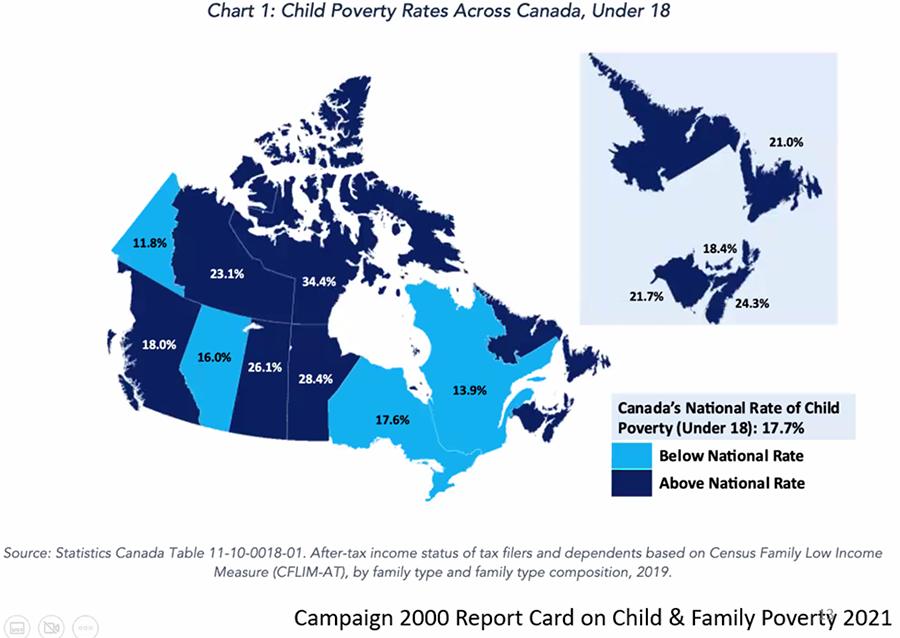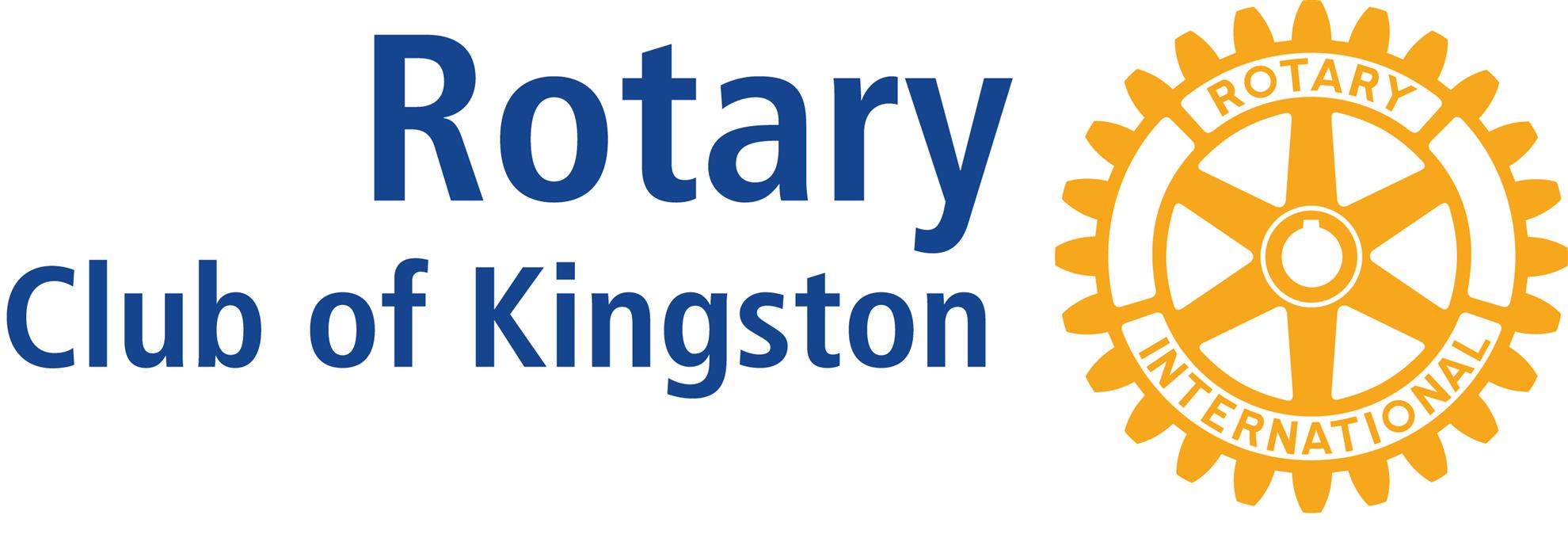
Elaine Power, a professor in the School of Kinesiology & Health Studies at Queen’s University and a co-founder of the Kingston Action Group for a Basic Income Guarantee, spoke on the need to create a “Basic Income” program for Canada to alleviate poverty in Canada.
Power used a series of slides to demonstrate the major parameters of poverty in the country.
Some examples of data to demonstrate the magnitude of the problems included:
- Food Banks usage is at an all-time high; over 1.5 million visits to Food Banks occurred in March 2022. One-third of the clients are children. However, foodbanks are only used by about 1 million out of the 6 million experiencing food insecurity in an average month. That is 16% of Canadian households and means one in five children face food insecurity.
- Food insecurity is “the inadequate or insecure access to food due to financial constraints.” It is categorized as marginal, moderate, or severe. In the latter meals are skipped.
 Families on social assistance are the most likely to experience some level of food insecurity. (31% marginally, 27% moderately, and 5% severely)
Families on social assistance are the most likely to experience some level of food insecurity. (31% marginally, 27% moderately, and 5% severely)- 38% of households being supported by only one female are by far the most likely to experience some level of food insecurity even if relatives live with them.
- Indigenous Canadians as a cultural/racial cohort have the highest rate of food insecurity at 31%, 3% points higher than the next highest group Arab/West Asians. Whites are at 13.2%
- Children from birth to under 18 have the highest level of food insecurity at 19%, while those over 75 have the lowest at 6%.
- The annual health care costs for a person in the severely food insecure category in Ontario is over $3,900, whereas a food secure person’s cost is $1,600 or less than half. The death rate for the two groups is 2.5 to 1 as well. Hence as one would expect Food Insecurity is associated with multiple health problems and increased demands on the health system
- Food insecure families spend less on food, housing, transportation, clothing and personal care; have a poorer quality diet, be behind in payments for rent, internet, phone and live in overcrowded conditions and in a house needing repairs.
| |
 | |
 |
The solution
Power outlined three distinct levels of Basic income: the minimalist-libertarian model, a mixed welfare model, and a big strong model. However, she first said the model organizations such as the Basic Income Canada Network, Coalition Canada on Basic Income, UBI Works and Basic Income Canada Youth Network want is “an unconditional cash transfer from government to individuals to enable everyone to meet their basic needs, participate in society and live with dignity, regardless of work status.”
For Power and her associates the Big Strong model is the only one that features, strong universality and conditionality, has generous benefit levels and can be integrated with other programs.
Opposition
Ironically, opposition comes from both the right and left. On the right they believe “we can’t afford it”, that it will be a disincentive to work and will make people lazy and that it is akin to giving people “money for nothing.”
The left wing, on the other hand, fear it will be a trojan horse to eliminate the few social safety nets that remain; amounts to a subsidy for low-wage employers, takes money from other social support programs and that unionized social service jobs will be loss.
 In conclusion, Power identified where we stand in the country as a whole and in each province.
In conclusion, Power identified where we stand in the country as a whole and in each province.Power has written a book in conjunction with Jamie Swift “The Case for a Basic Income: Freedom, Security and Justice. Published in 2021, it describes the prematurely cancelled Ontario Basic Income Pilot (2017-18).
Further material:
For the full presentation refer to Power Point Presentation "Basic Income" attached
Dr. Valerie Tarasuk provides further information on this issue. https://www.youtube.com/watch?v=-EJ2HGsPBW8

